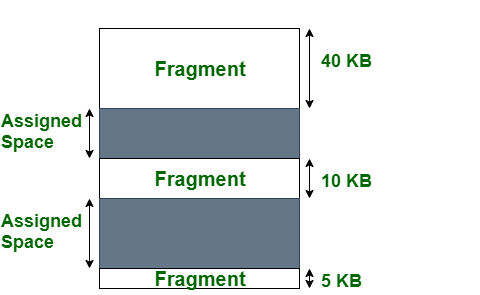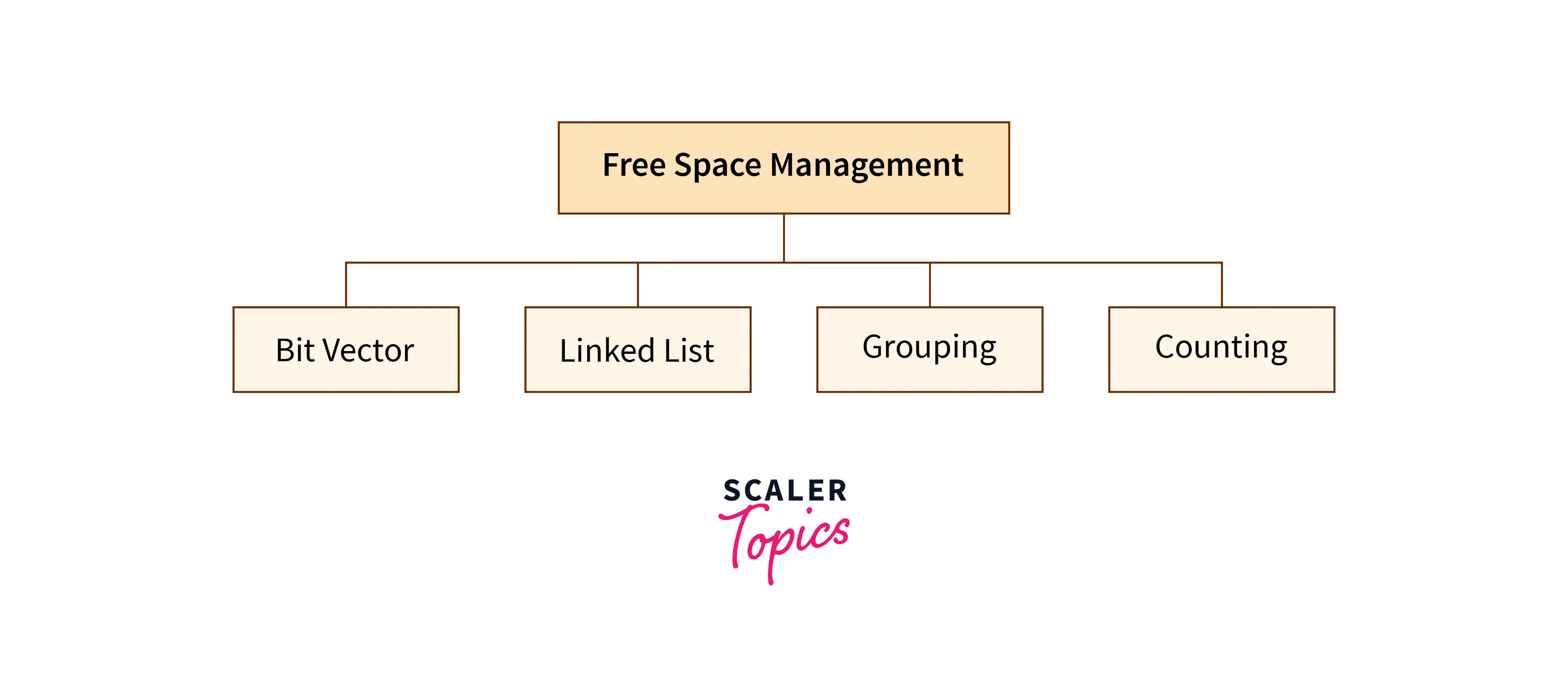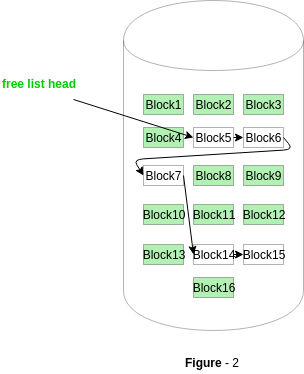Memory Management Techniques
Logical versus Physical Address Space
- Logical Address
- An
address generated by the CPUwhile a program is running - The logical address is basically the address of an instruction or data used by a process.
- User can access logical address of the process.
- User has
indirect access to the physical address through logical address - Logical address does not exist physically. Hence,
aka, Virtual address - The set of all logical addresses that are generated by any program is referred to as
Logical Address Space - Range:
0 to max
- An
- Physical Address
- An address loaded into the memory-address register of the physical memory.
- User can
never access the physical addressof the Program. - The physical address is in the memory unit. It’s a location in the main memory physically.
- A physical address can be accessed by a user indirectly but not directly.
- The set of all physical addresses corresponding to the Logical addresses is commonly known as
Physical Address Space - It is computed by the
Memory Management Unit (MMU) - Range:
(R + 0) to (R + max), for a base value R
Common terms
Internal Fragmentation
- If the size of the
process is lesser then the total size of the partitionthen some size of the partition gets wasted and remain unused. - This is wastage of the memory and called internal fragmentation.

External Fragmentation
- The total
unused spaceof various partitions cannot be used to load the processes even though there is space availablebut not in the contiguous form - Eg: 55KB unused
space available, but still can't allocateto process which need 41KB or more. - NOTE:
- If there is Internal Fragmentation then External Fragmentation is also present
- Vice-versa is not true

Memory management unit (MMU)
- The runtime
mapping from virtual to physical addressis done by a hardware device called the memory-management unit (MMU) Relocation register- Used to map logical and physical memory address in contiguous allocation.

- Used to map logical and physical memory address in contiguous allocation.
How OS manages the isolation and protect? (Memory Mapping and Protection)
- OS provides this Virtual Address Space (VAS) concept.
- To separate memory space, we need the ability to determine the range of legal addresses that the process may access and to ensure that the process can access only these legal addresses.
- The
relocation registercontains value of smallest physical address (Base address [R]); the limit register contains the range of logical addresses (e.g., relocation = 100040 & limit = 74600). - Each logical address must be less than the limit register.
- MMU maps the logical address dynamically by adding the value in the relocation register.
- When CPU scheduler selects a process for execution, the dispatcher loads the relocation and limit registers with the correct values as part of the context switch. Since every address generated by the CPU (Logical address) is checked against these registers, we can protect both OS and other users’ programs and data from being modified by running process.
- Any attempt by a program executing in user mode to access the OS memory or other uses’ memory results in a trap in the OS, which treat the attempt as a fatal error.
Memory Allocation(Management) Techniques
- Main memory can be
allocated in two ways:- Contiguous Memory Allocation
- Non-contiguous MemoryAllocation
Contiguous Memory Allocation
- Each process gets
a single contiguous blockof memory. - Contiguous memory allocation can be categorized into
two ways- Fixed Partitioning
- Variable/Dynamic Partitioning
Relocation register is used as MMUin contiguous allocation to map logical and physical memory address.
1. Fixed Partitioning
- In the fixed partition scheme, memory is divided into
fixed number of partitions - It can be of
equal or different sizes - Limitations:
- Internal Fragmentation
- External Fragmentation
- Limitation on process size
- If the
process size is larger than the size of maximum sized partitionthen that process cannot be loaded into the memory. - Therefore, a limitation can be imposed on the process size that is it cannot be larger than the size of the largest partition.
- If the
- Low degree of multi-programming
- In fixed partitioning, the degree of multiprogramming is fixed and very less because the size of the partition cannot be varied according to the size of processes.
2. Dynamic Partitioning
- In this technique, the
partition size is not declared initially - It is declared at the time of process loading
- Pros
- No internal fragmentation
- No limit on size of process
- Better degree of multi-programming
- Cons
External fragmentation- Eg: Two process of size 2MB and 1MB exits
- But if another process neds 3MB it can’t be assigned
- Eg: Two process of size 2MB and 1MB exits
- Allocation and deallocation of memory is complex
- Difficult Implementation
- The main disadvantage of Dynamic partitioning is External Fragmentation.
- Can be removed by Compaction, but with
overhead
- Can be removed by Compaction, but with
Defragmentation/Compaction
Solution for External fragmentationin Dynamic Partitioning- In Contiguous memory allocation we can
remove external-fragmentation by using defragmentation - It is a process, where all scattered fragments (data) are rearrange in such that they come in sequence.
- Dynamic partitioning
suffers from external fragmentation Defragmentation is appliedto minimize the probability of external fragmentation.- Where all the
free partitions are made contiguous, and all the loaded partitions are brought together. - By applying this technique, we
can store the bigger processesin the memory. - Cons
- The efficiency of the system is decreased in the case of compaction since all the free spaces will be transferred from several places to a single place.
Free Space Management
Solution for Holes managementin Dynamic Partitioning- File management system in an OS is used to
keep track of free spacesto allocate and de-allocate memory blocks to files. Free space listis used to maintains the record of free blocks.- When a file is created,
- OS searches and
allocatesfree space from the ‘free space list’ - On deletion of file, the file system
freesthe given space and adds this to the ‘free space list’
- OS searches and
- There are various approaches for free space management in os :
- Bit vector or Bitmap
- Linked List
- Grouping
- Counting

- Suppose:
- The
free blocknumbers are 3, 4, 5, 6, 9, 10, 11, 12, 13,14. - And
occupied blocknumbers are 1, 2, 7, 8, 15,16
- The
Bit vector or Bitmap
1 --> Free blocksO --> Occupied blocks- Bitmap is represented as:
0011110011111100 - Pros
- Simple and easy to understand.
- Consumes less memory.
- It is efficient to find free space
- Cons
- Inefficient to find holes
- The OS goes through all the blocks until it finds a free block
- It is not efficient when the disk size is large
- Inefficient to find holes
Linked List 👍
- All the free blocks inside a disk are
linked together in a linked list - Prod
- Available space is used efficiently
- As there is
no size limiton a linked list, a new free space can be added easily
- Cons
- In this method, the overhead of maintaining the pointer appears.
- The Linked list is not efficient when we need to reach every block of memory.

Grouping
- The grouping technique is also called the
modification of a linked list technique - The first free block of memory contains the addresses of the n-free blocks
- And the last free block of these
n-th free blocks contains the addresses of the next n free blockof memory and this keeps going on- Then:
Block 3: 4,5,6andBlock 6: 7, 8, 9, 10, 11, 12, 13, 14
- Then:
- Pros
- We can easily
findaddresses of a large number of free blockseasily and quickly
- We can easily
- Cons
- We need to change the entire list if one block gets occupied
Counting
- Address of first free disk block (a pointer) and a number ’n'
- From above example:
Block 3: 4(i.e 3,4,5,6)- and
Block 9: 6(i.e 9,10,11,12,13,14)
- Pros
- A bunch of free blocks take place fastly.
- The list is smaller in size.
- Cons
- The first free block stores the rest free blocks, so it requires more space.
Partitioning Algorithms in Memory Management
- Various algorithms which are implemented by the OS in order to
find out the holesin the free space listand allocate themto the processes. - First Fit 👍
Allocate the first holethat is big enough.Simpleand easy to implement.Fast/Less time complexity
- Next Fit
- Enhancement on First fit but
starts search always from last allocated hole - Same advantages of First Fit.
- Enhancement on First fit but
- Best Fit
- Allocate
smallest hole that is big enough Lesser internalfragmentation.- May create many small holes and cause
major externalfragmentation. Slow, as required to iterate whole free holes list.
- Allocate
- Worst Fit
- Allocate the
largest hole that is big enough Slow, as required to iterate whole free holes list.- Leaves larger holes that may accommodate other processes.
Lesser externalfragmentation
- Allocate the







